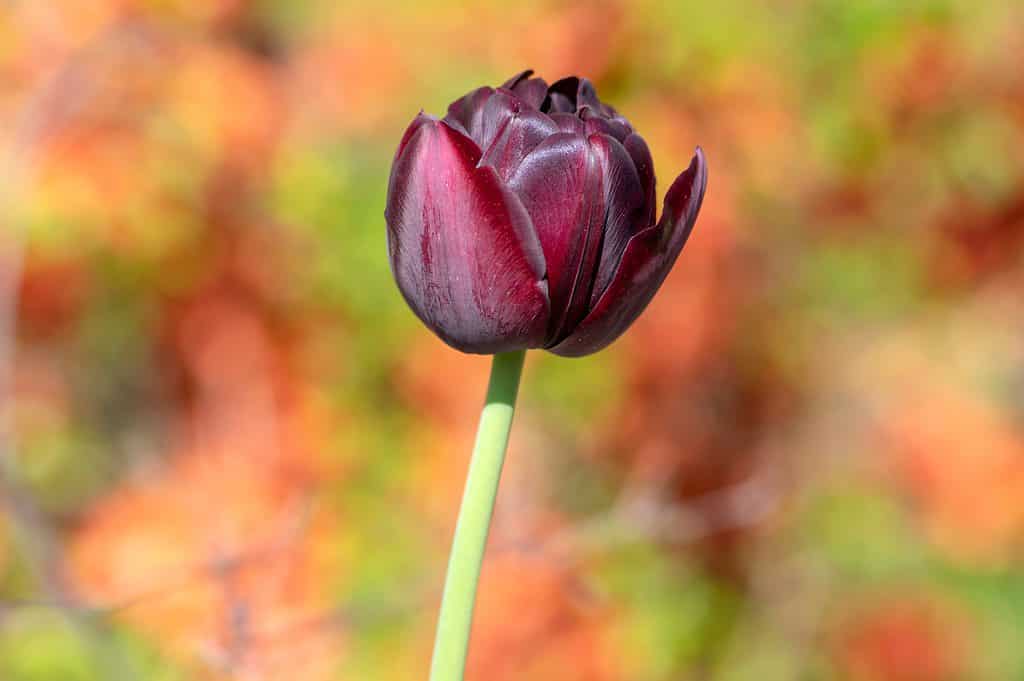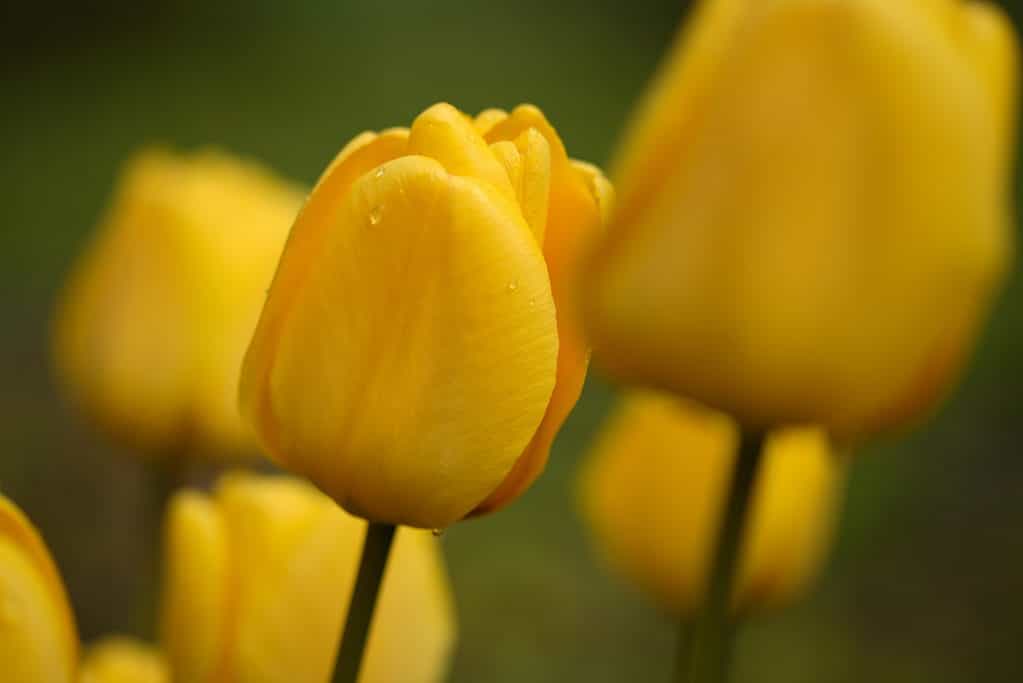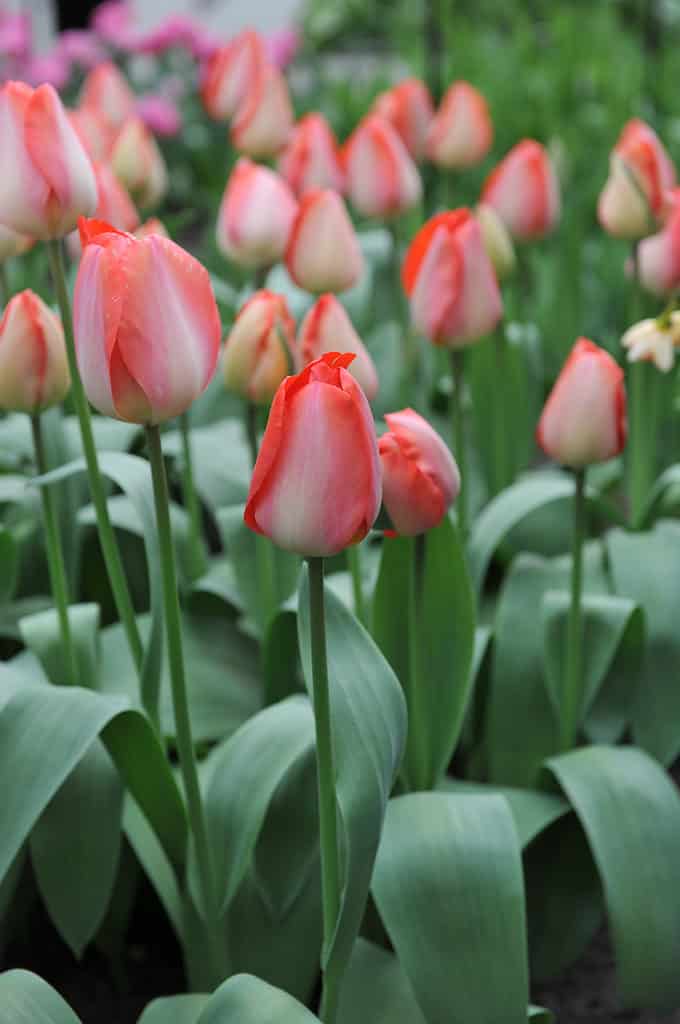Hawaii may be a paradise for many of us, but tulips see things differently. Tulips, and other bulb flowers, require a cold stratification period that lasts for several months in order to break dormancy. Without this chilled period, the tulips will be malformed. They may not bloom. And they might not grow at all.
Most tulips thrive in Zones 3-8, including the somewhat ironically-named Hawaii Tulip (Tulipa Hawaii). The irony is that this tulip named for the state grows best in cooler zones, while Hawaii’s growing zones range from Zones 9a-13a.
So does this mean that Hawaiians are out of luck when it comes to tulips? Not at all!
Residents of Hawaii can still enjoy tulips each spring. It just requires some advance planning and a little extra effort.
(It probably goes without saying, but we’re not discussing the invasive African tulip tree.)

Pink with white fringed
Tulipa Hawaiiin bloom.
©Sergey V Kalyakin/Shutterstock.com
Get to Know the Tulip
The Tulipa genus includes around 150 species with over 3,000 cultivars. They are divided into 15 different classifications based on shape, height, and when they bloom. The vast number of tulips, combined with the inhospitably hot climate of the Aloha State, can leave Hawaiian gardeners at a loss.
Let’s cut through the confusion with some helpful tips on choosing and growing a spectacular Hawaiian tulip display.
| Tulip Facts | |
|---|---|
| Botanical Name | Tulipa spp. |
| Common Name | Tulip |
| Plant Type | Perennial, bulb |
| Soil | Rich, well-drained |
| Bloom Season | Spring |
| Toxicity | Toxic to both humans and pets |
Types
A tulip specifically adapted for a hot climate doesn’t exist. There are, however, some varieties that tolerate warmer temperatures better than others. Here are the two best types of tulips for warmer growing zones. With a little coaxing, these beauties can bloom in your Hawaii garden each spring.
1. Single Late Tulips
These long-stemmed tulips are probably your best bet for warmer climates, such as Hawaii. Single late tulips come in a wide variety of colors, ranging from white to pink to yellow to almost black.
French single late tulips fare particularly well in warmer zones because the bulbs mature earlier, so gardeners in Hawaii might want to seek them out specifically.

Pink-orange French single late tulips growing in a field.
©ISmiths/Shutterstock.com
Other single late cultivars to consider for the warm Hawaiian climate include the Queen of Night, Menton, Maureen, Halcro, and Black Diamond.

Black Diamond single late tulip in bloom.
©Iva Vagnerova/Shutterstock.com
2. Darwin Hybrid Tulips
The Darwin hybrid tulip is among the most popular tulip cultivars due to its tall growth and brilliantly colored bulbs. It can also handle warmer temperatures better than many other tulip types.
Darwin hybrids come in a rainbow of colors including yellow, red, pink, orange, white, and even bi-color. Darwin hybrids are also among the tallest growing tulips, reaching heights of 28 inches and beyond.
The Darwin hybrid tulip is a good option for Hawaiian gardens because it is hardy. While it is ideal for growing in Zones 3-8, the Darwin hybrid is a tough flower that can grow in less-than-ideal tulip conditions, like warmer growing zones.
Consider Darwin hybrid varieties such as Apeldoorn, Golden Apeldoorn, Pink Impression, Daydream, and Big Chief. These lists are not exhaustive. If you can’t find one of these specific varieties of single late or darwin hybrid tulip, that doesn’t mean that other varieties won’t work. Go with what you’ve got!

Golden Apeldoorn Darwin hybrid tulips in bloom.
©Bildagentur Zoonar GmbH/Shutterstock.com
Planting Tips
Now that you have a couple of options in mind, let’s talk about some tips and best practices that will help your tulip garden flourish.
Bulb Selection
Starting with a healthy bulb is crucial. Inspect each bulb before planting. If it looks moldy or withered, don’t use it.
Healthy tulip bulbs are beige or white with a papery outer jacket. The best bulbs are dry and firm, not soft or squishy, and are free of streaks, spots, and cracks.
Larger bulbs are also preferred since they have a greater storehouse of nutrients. Tulips in Hawaii grow in tough conditions, so each plant will need to have as many nutrients stored up as possible.

Healthy tulip bulbs are large and free of discoloration.
©Natallia Ustsinava/Shutterstock.com
Chilling Tulip Bulbs
Tulip bulbs fare best when they are planted in soil temperatures below 55°F. After planting, the bulbs need that critical chilled period through the winter. Obviously, that is hard to come by in Hawaii, so you’ll need to “trick” your tulip bulbs.
Instead of planting bulbs in the fall like your friends in colder regions, you must place them in a refrigerator.
Tulip bulbs need to be chilled for 10-14 weeks at 35 to 45°F. This cold exposure causes the needed biochemical response for the bulb to emerge from dormancy and initiate root growth. If you need to chill the bulbs longer than the recommended time, that’s okay. However, less chilled time will severely hinder your tulips’ growth and vitality.
When chilling bulbs in the fridge, you’ll want to make sure there is adequate air circulation. Store the bulbs in a ventilated bag or box. Be sure not to seal them up in an airtight container or bag. That will cause the bulbs to hold too much moisture, leading to bulb rot.
Also, there must be no fruit in the refrigerator you’re using for your bulbs. Ripening fruit (especially apples) emits ethylene gas, which can harm the embryonic flowers inside the bulbs. If you have a spare fridge with no food at all, that would be best.
When to Plant
It’s best to start chilling your bulbs in October. Then in December, you can plant them in containers that can be stored in the refrigerator for another four weeks.
In January, usually the coolest month of the year in Hawaii, you can plant the chilled bulbs in the ground.
Where to Plant
In climates such as Hawaii’s, you’ll want to choose a spot with partial shade.
When placing your tulips, keep in mind that tulip bulbs contain alkaloid and glycoside compounds that are mildly toxic to humans and moderately toxic to pets.
Gardening gloves are highly recommended whenever you handle bulbs or blooms to prevent “tulip fingers,” a skin rash well-known to tulip growers.
Once you have decided on placement, plant the bulbs, pointed side up, around 6-8 inches deep. Then cover the site with a couple of inches of mulch. This will help keep the bulbs cool. You can help keep the soil temperature low through regular watering, but be careful not to waterlog the soil.
Aren’t Tulips Perennials?
Yes, tulips are indeed perennials, but Hawaiian gardeners need to ignore this completely. Tulips will not perennialize in such a hot growing zone.
Instead, treat your tulips as annuals by digging up the bulbs after the growing season and planting new bulbs in the fall.
Pests
When your tulips bloom, they are vulnerable to pests. Aphids, in particular, are a common pest in Hawaiian gardens, and these insects love to munch on tulip leaves. Aphids also draw ants, because the ants feed on the aphids’ excretions (known as honeydew). So if ants swarm around your tulips, it’s a good bet that aphids are present.
Spraying your tulips with insecticidal soap is an effective way to eradicate these pests that is also environmentally safe.
You can also dip a cotton swap in rubbing alcohol and apply it directly to the aphids.
You worked hard for these tulips, so they’re worth protecting from these aphid invaders!

Green aphids on a green leaf.
©schankz/Shutterstock.com
Final Thougts
Tulips certainly aren’t top-of-mind when it comes to Hawaiian flowers. You’re much more likely to think of beautiful tropical blooms, such as the plumeria, orchid, hibiscus, and bird of paradise.
But that doesn’t mean that classic spring flowers are impossible to grow. Hawaiian gardeners will have to work a bit harder for a spring crop of tulips, but it can be done. Give it a go. Aloha!

Pink-red Big Chief Darwin hybrid tulips.
©Sergey V Kalyakin/Shutterstock.com
The photo featured at the top of this post is © Sergey V Kalyakin/Shutterstock.com
Thank you for reading! Have some feedback for us? Contact the AZ Animals editorial team.






